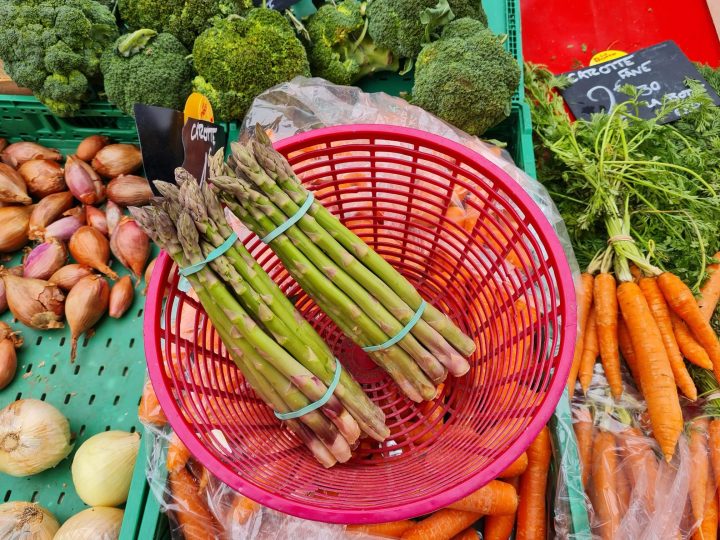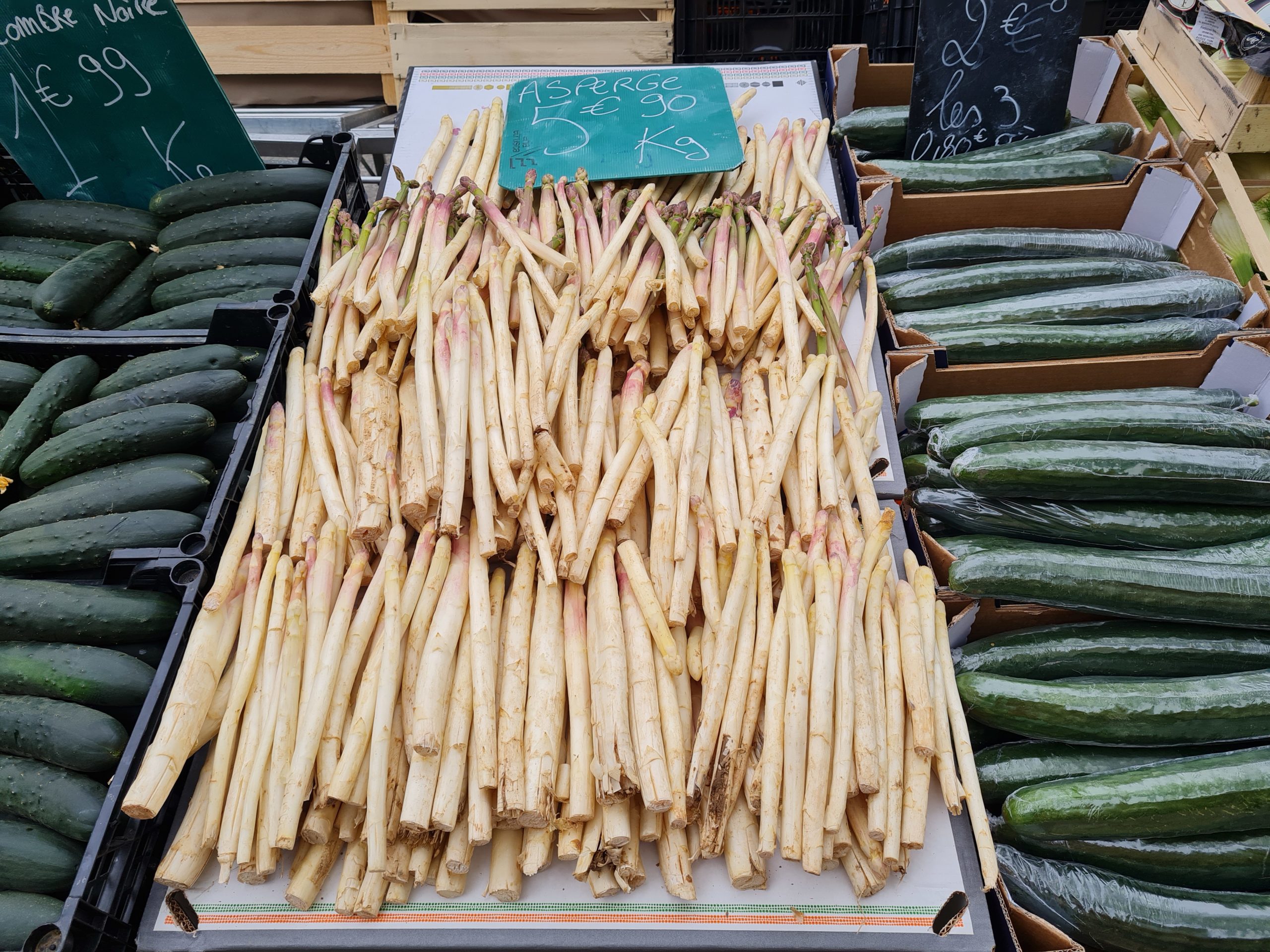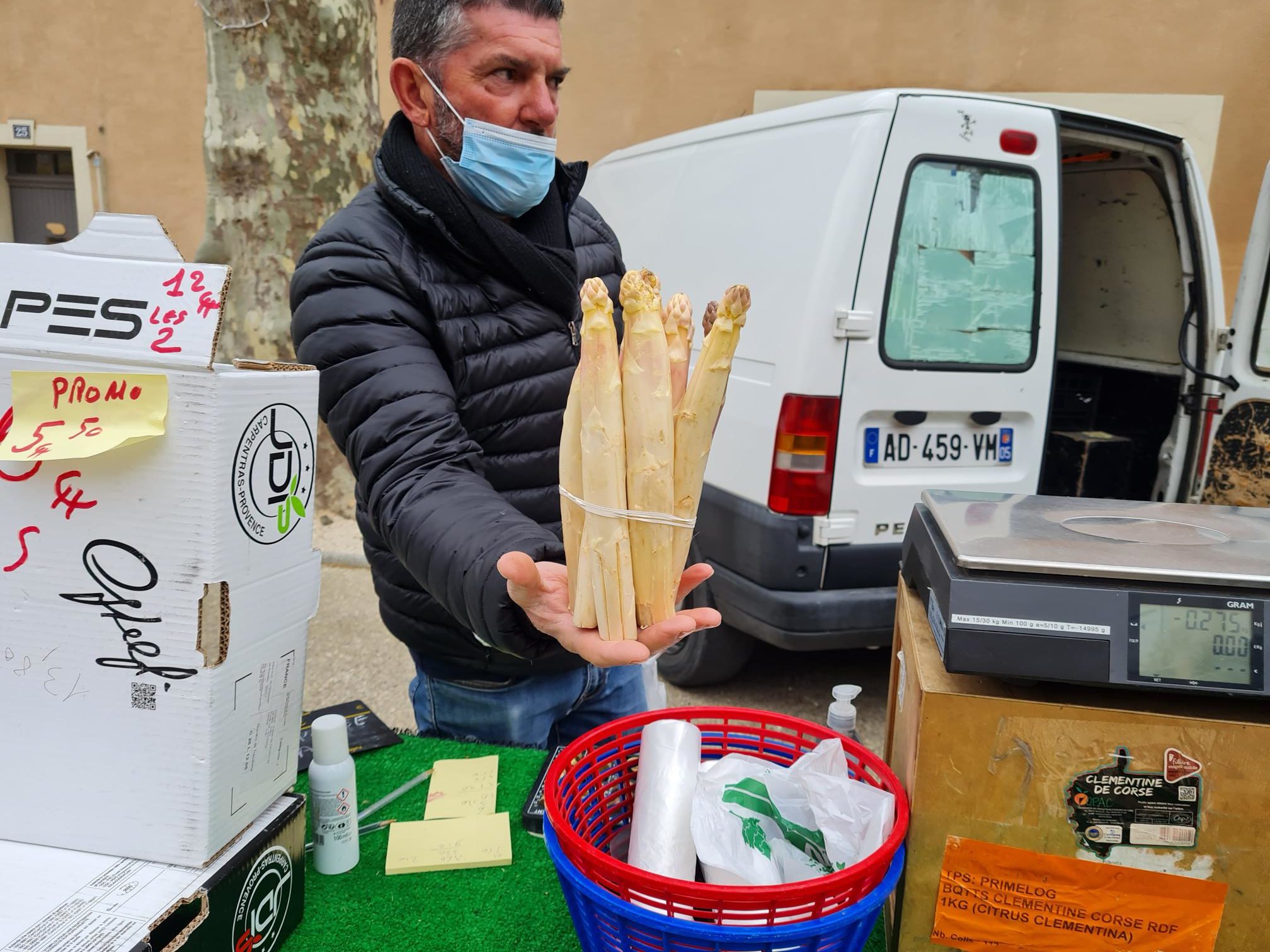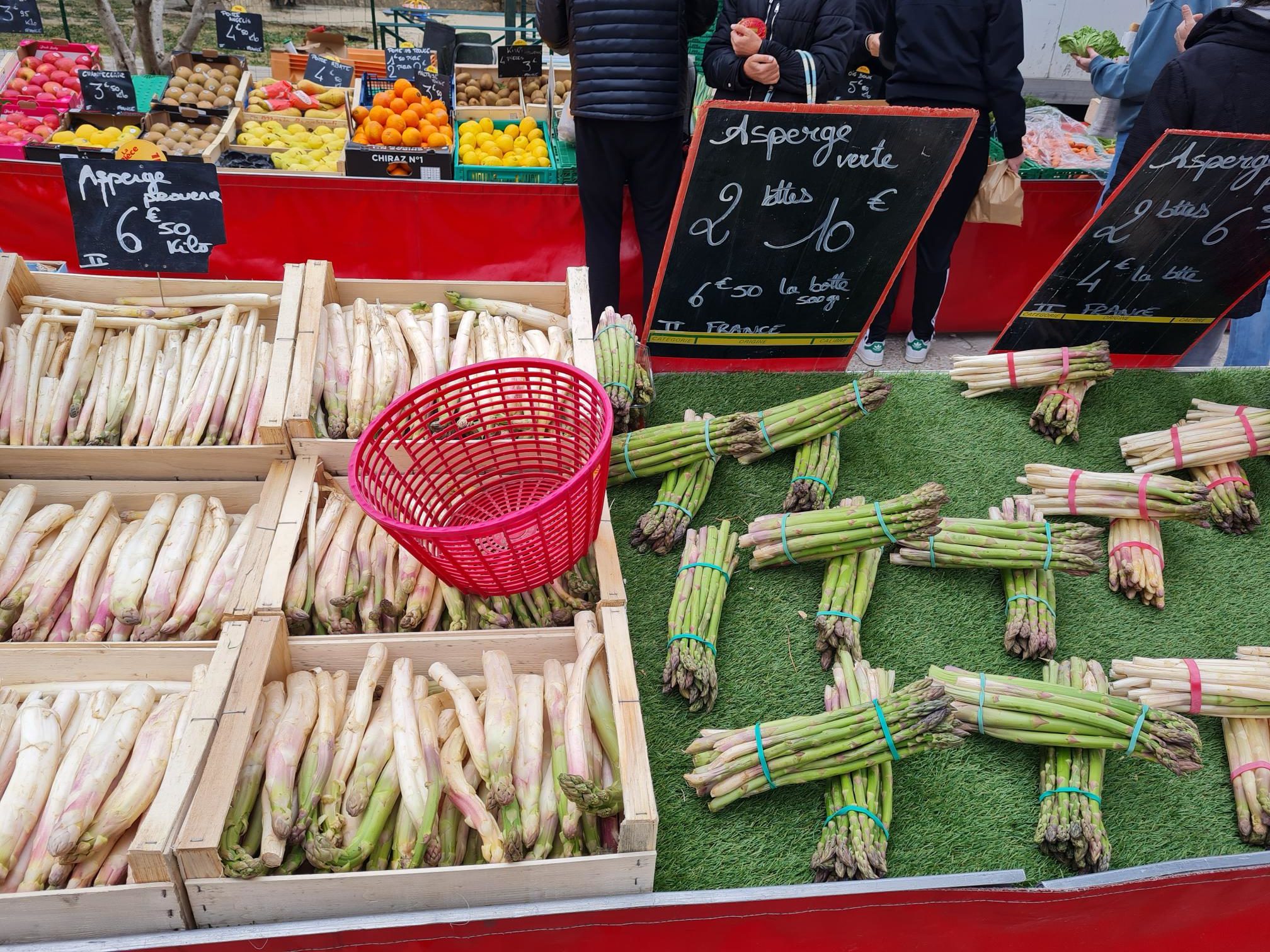FRENCH LETTER
Asparagus, green and white, big and small

As a girl from the suburbs of Cape Town, I thought asparagus meant those pale, floppy finger-shaped things found in a tin.
The author supports Ladles of Love, an NGO feeding the hungry and providing healthy food in Cape Town. You can support them here.
If you told the child I was a long time ago that one day I would literally jump for joy at the sight of the first asparagus of the season, I would have laughed in your face.
Or sniggered behind your back, more likely, because I was an obedient little girl taught to believe what adults told me, however incredible their tales seemed.
And getting excited about asparagus seemed ridiculously incredible.
As a girl from the suburbs of Cape Town, I thought asparagus meant those pale, floppy finger-shaped things found in a tin. Probably born in a tin and spending their miserable little lives drifting in clear liquid until they ended up in some unfortunate person’s mouth.
How wrong can you be, nè.
By the time I arrived in France I had at least tasted real fresh asparagus, as opposed to the canned version, and found I actually liked it. Although even the fresh ones were still pale and limp, usually slightly overcooked, and drowned in mayonnaise. Or Hollandaise sauce, if the dinner table was somewhat more sophisticated.
Most of the time the dish resembled the plates of slap chips that we used to drag through pools of ketchup. Undeniably tasty, but not great to look at.
This was also long before I heard the Latin phrase velocius quam asparagi coquantur (faster than you can cook asparagus), coined by the Roman Emperor Augustus as a metaphor for any action that had to be performed speedily. Two thousand years ago old Augustus apparently knew what some cooks still haven’t grasped. Overcooking asparagus should be regarded as the eighth deadly sin.
So imagine my delight when I discovered the fresh green asparagus of Provence, sprinkled with olive oil and quickly grilled or roasted so they tasted almost raw, simply served with a few shavings of Parmesan or mixed summer herbs or paper-thin slices of smoked ham. It was a whole new culinary experience – one that still thrills me every spring, after more than two decades in this country.

First exhilarating sight of white asparagus at the market. (Photo: Marita van der Vyver)
Because after tasting the real thing one doesn’t want to touch canned asparagus again.
What this means, is that for 10 months of the year we don’t eat asparagus in our house. Until spring comes around again and we spot the first bunches at the market, always a moment of tremendous excitement. It is the kind of thrill that could be compared to spotting the first spring flowers in Namaqualand. The annual asparagus season is as short and lovely as the wild-flower season on the West Coast of South Africa.

The beautiful ‘asperges violettes’ of the Vaucluse region. (Photo: Marita van der Vyver)
So for about six weeks in April and May we try to eat enough asparagus to keep us going without asparagus for the rest of the year. Until next spring, when fat, white (and sometimes really huge) asparagus would start appearing like royalty among all the lesser, more common and more colourful vegetables. We prefer the thin green asparagus, also aristocrats but a little slower to show their faces, so for them we usually have to wait another couple of weeks.

White asparagus rolled in slices of good ham and served with the nutty brown rice of Camargue. (Photo: Marita van der Vyver)
Meanwhile we would buy a bunch of white asparagus to celebrate the beginning of spring. In an ideal world we would eat this debut asparagus dish outside, under the olive tree, but we live in a real world where the Mistral often blows all our good intentions away. April is notorious for one windy day after another, and this year was no exception.
Once again our first plate of white asparagus, rolled in ham slices and baked in the oven with a creamy white sauce, was consumed inside while longingly looking through the window at the olive branches swinging in the vicious wind. We simply refuse to let a little wind – or even a monster wind like the Mistral – spoil this particular culinary pleasure.

Gigantic white asparagus monsters at the market. (Photo: Marita van der Vyver)
After those first modest displays of asparagus at the weekly market or in the village grocery shop, we start seeing more and more asparagus. In the beginning of the season, when they are still scarce, they often cost more than we’d like to pay, reminding us that these vegetables used to be so expensive in France that only aristocrats could eat them. King Louis the Sixteenth and his Queen Marie Antoinette had them cultivated specially for royal dinners, definitely not to share with common folks.
Nowadays, at the start of every spring, common folks like us tell ourselves we’ll wait a while for the prices to drop before we buy more asparagus. But because the season is so short, and we are so afraid that we won’t get our fill before the asparagus disappear again, we usually lack the patience to wait. By the third week we throw all caution to the wind.

The thin green ones start appearing alongside the fat white ones. (Photo: Marita van der Vyver)
By then we are sometimes fortunate enough to find our favourite green ones at a reasonable price.
By the way, despite the surprising difference in colour, size, shape and even taste, all asparagus come from the same plant cultivated in different ways. The white ones grow under the soil without any exposure to light, while the others grow above ground, exposed to bright sunlight, which allows them to produce chlorophyll and turn from white to purple to green. And the violet-tinted asparagus known as asperges violettes, another delicacy of Provence, are harvested before they can turn green.
Each spring the increasingly beautiful and bountiful displays of asparagus draw us to the weekly markets in neighbouring villages – even in this pandemic year when we stay away from markets as much as possible. It is just that there is something so irresistibly life-affirming in these seasonal exhibits. Viruses might come and go, buyers and sellers might be forced to hide behind masks and not touch each other in any way, but nature still blesses us with her enduring cycle of fruit and vegetables.
And eating the right food, locally available at the right moment in time, remains one of the greatest joys of my life in this part of the world. Not even the Covid-19 virus could change this. DM/TGIFood





 Become an Insider
Become an Insider
Comments - Please login in order to comment.